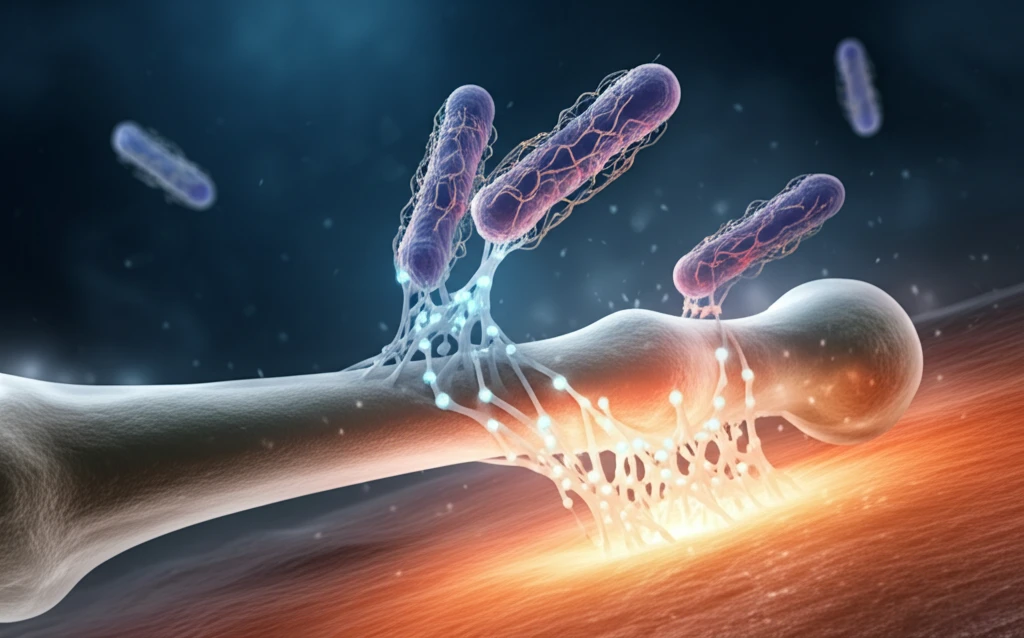
Unlocking the Secrets of Staphylococcus Aureus: How Bacteria Invade Your Bones
"Decoding the process of Staphylococcus aureus internalization by osteoblasts, and what it means for treating bone infections."
Staphylococcus aureus is a common bacterium, often found on the skin or in the nose, and is a leading cause of implant-related orthopedic infections. While it was once believed to primarily exist outside of cells, research has revealed its ability to invade eukaryotic cells, including those in bone tissue. This discovery has transformed our understanding of how these infections take hold and persist.
The initial step in Staphylococcus aureus infection is adhesion to the tissues surrounding an implant. This adhesion sets the stage for the bacteria to internalize, or enter, the host cells. Once inside, the bacteria can evade the body's natural defenses and antibiotic treatments, leading to chronic and difficult-to-treat infections like osteomyelitis.
Recent studies have focused on the specific mechanisms that Staphylococcus aureus uses to invade bone cells, particularly osteoblasts, which are responsible for bone formation. By understanding these processes, scientists hope to develop more effective strategies to prevent and treat implant-related infections.
The Role of Adhesins and Fibronectin in Bacterial Internalization

Adhesins, also known as MSCRAMMs (Microbial Surface Components Recognizing Adhesive Matrix Molecules), are essential for Staphylococcus aureus to interact with bone matrix proteins such as fibronectin, collagen, and bone sialoprotein. These interactions facilitate the bacteria's attachment to bone tissue, allowing them to colonize the area and initiate the infection process.
- FnBPA: Appears to play a crucial role in the internalization process.
- CNA and Bbp Adhesins: Can play a synergistic role by acting in the initial adhesion of S. aureus to osteoblasts, thus favoring the subsequent FnBPA-mediated internalization.
- Genetically Different Strains: Different strains of S. aureus exhibit varying abilities to adhere and internalize due to differences in their genetic makeup, particularly in the genes coding for adhesins.
Future Directions and Therapeutic Implications
Understanding the mechanisms by which Staphylococcus aureus adheres to and invades bone cells opens the door to new therapeutic strategies. By targeting specific adhesins or the fibronectin-mediated internalization process, researchers hope to develop treatments that can prevent or disrupt bone infections. This may involve designing drugs that block the interaction between bacterial adhesins and bone matrix proteins or developing vaccines that stimulate the immune system to target these bacteria more effectively. Continued research in this area is essential for improving the outcomes of patients with implant-related orthopedic infections and osteomyelitis.
